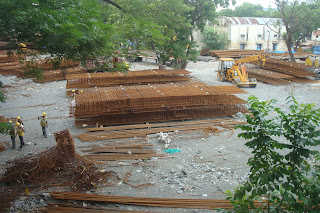Imagine you are the foremost mathematician of your time, living in Cambridge, England. Imagine you get a letter from Madras, postmarked January 16, 1913, which starts off,
"Dear Sir,
I beg to introduce myself to you as a clerk in the Accounts Department of the Port Trust Office at Madras on a salary of only £20 per annum. I am now about 23 years of age. I have had no University education but I have undergone the ordinary school course...."
What would you do?
G.H. Hardy was intrigued by the letter and the 9 pages of theorems appended with it. Some were familiar, many were not. At the end of it, Hardy concludes, "They must be true because, if they were not true, no one would have the imagination to invent them". Thus began a great collaboration in the world of mathematics, one that has been described several times over (most brilliantly by Robert Kanigel in 'The Man Who Knew Infinity: A Life of the Genius Ramanujan').
Ramanujan was encouraged to write that letter by Sir Francis Spring, the Chairman of the Madras Port Trust and S. Narayana Iyer, the Chief Accountant. That they had taken such an interest in the non-official activities of a Class III Grade IV clerk was because that post was a sinecure, procured by the efforts of R. Ramachandra Rao, the district collector of Nellore and secretary of the Indian Mathematical Society. Ramanujan had been introduced to Ramachandra Rao in 1910 and had requested Rao for "leisure" to work on his mathematics. Rao arranged to bear his expenses, at the same time looking out for a more stable arrangement.
That arrangement was worked out in early 1912. Ramanujan joined the Madras Port Trust on March 1 that year. His tenure at the Port Trust was short; but it was the only formal employment he ever had. So it is that this bust is placed in the foyer of the Port Trust's Conference Hall - a proud employer honouring its most famous employee!









